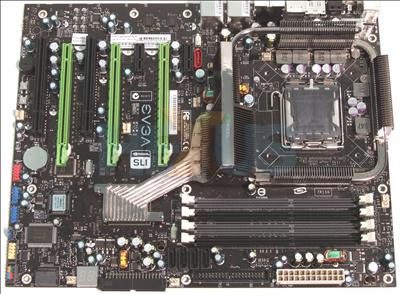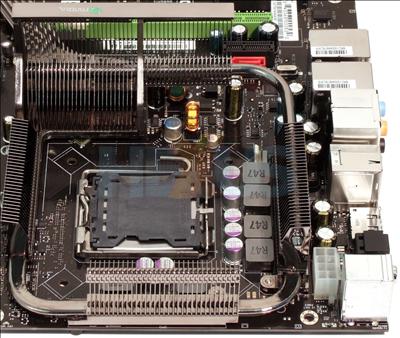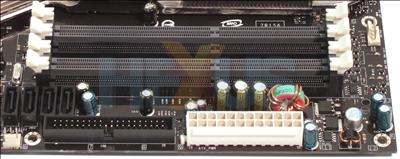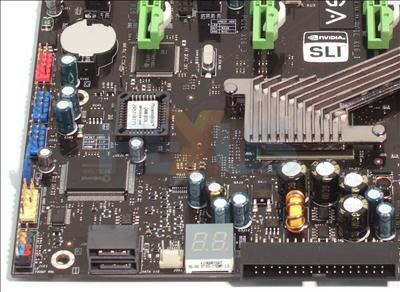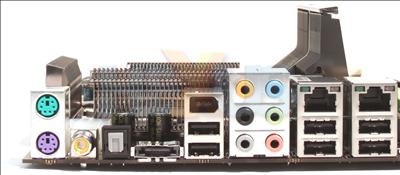A look at the eVGA board
NVIDIA's reference design uses tried-and-trusted heatpipe-based cooling to keep the SPP and MCP bridges cool during operation.The BIOS is such that it automatically increases voltages as front-side bus (FSB) frequencies are increased, and the range of voltage/tweaking options mean that the hot-running power-delivery components and chipset bridges need specific attention.
The board also ships with an additional fan that can be mounted on the heatpipe, which makes sense when pushing it to the limit. It doesn't need to be used at stock speeds, though.
The heatpipe doesn't impinge upon the placement of most coolers; the mounting holes can be clearly seen.
The SLI-Ready support - which is known as EPP2.0 for DDR3 memory - offers one-click DDR3 memory speeds of 1,600MHz, 1,800MHz and 2,000MHz.
Enthusiast-oriented partners such as Corsair have compliant memory shipping right now. However, the two black-coloured slots need to be used when running memory above 1,801MHz. In effect, all four DIMM slots can be populated for, say, DDR3-1800, but anything higher is limited to just two. The 'problem' of high-speed DIMM population rests with the chipset and not the modules.
Still, the nForce 790i Ultra SLI promises higher-than Intel X48 clocking with respect to FSB and memory speeds.
Nothing really new on the southbridge side, and the layout hasn't changed much since the nForce 680i SLI days. The debug LED is always a handy feature, though.
As usual, the SATA ports are location-split between two that are rotated and positioned near the debug LED and a further four, in standard form, that sit by the DIMM slots.
Two of the three x16 mechanical slots (first and third) are provided, natively, by the northbridge and are endowed with second-generation PCIe status. The middle slot is pulled off the southbridge and whilst x16 electrically, is based on PCIe 1.x, which carries half the bandwidth - 4GB/s, in each direction - of PCIe 2.0.
The low-profile heatpipe doesn't impinge upon card placement and it's possible to install three GeForce 8800 GTXs without issue.
The red-coloured SATA port is powered by a JMicron JMB362 PCIe controller, by the way.
A single eSATA port is all that's really new on the I/O section.



